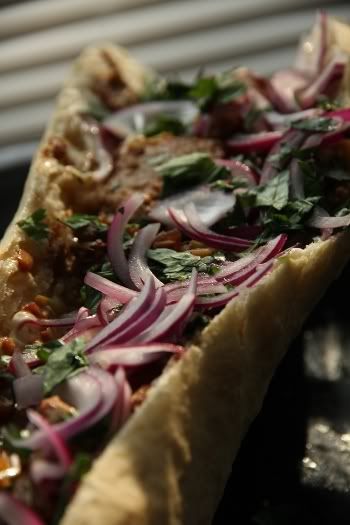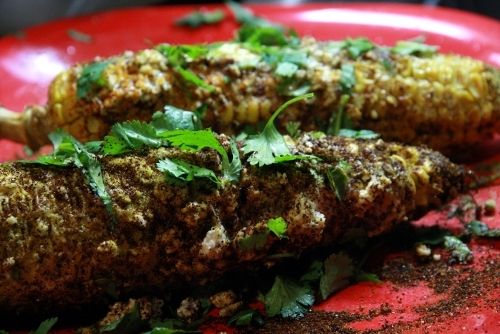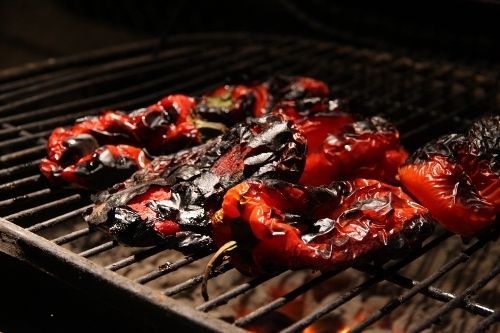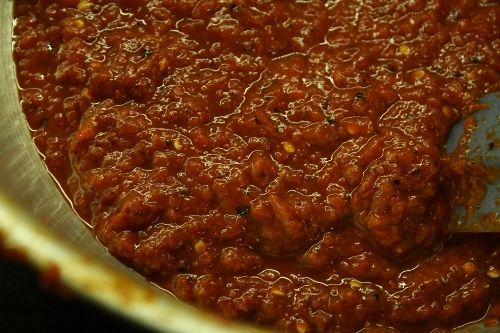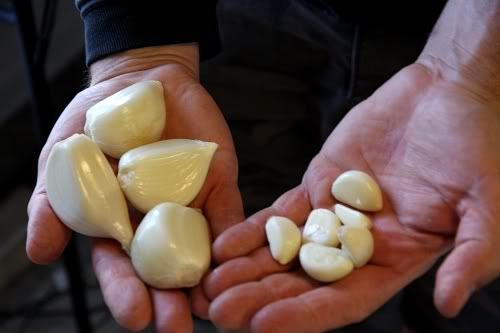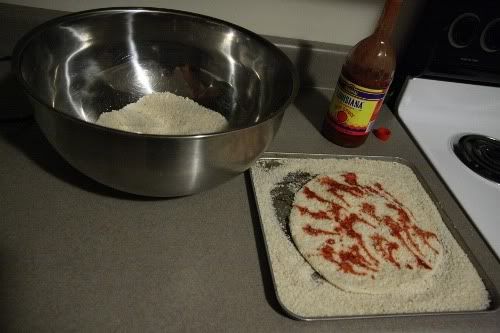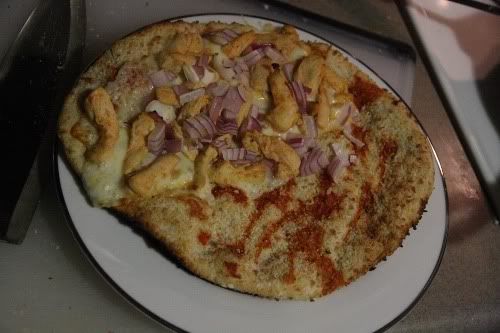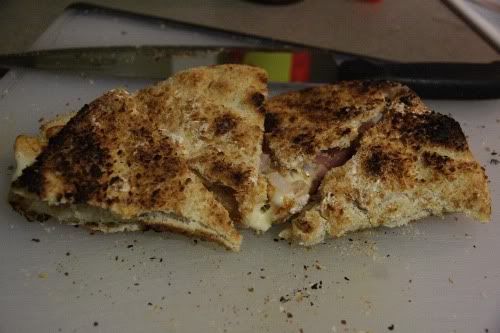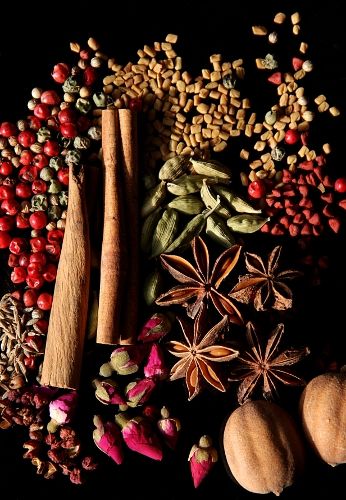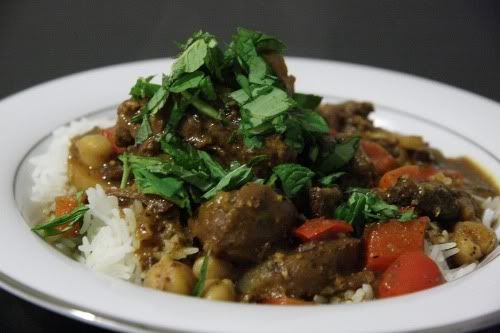About a year and a half ago, I created one of the two best sandwiches I've ever had in my life, the Bánh mì. Well, I didn't create the
original Bánh mì, but I think I probably improved on it with
my version. I've had Bánh mì from four other places so far, three of them Vietnamese, and so far mine has been better than any of them. Not just slightly better, either, I mean a
whole lot better. Which thrills and saddens me at the same time. Anyway, I've always wanted to experiment and come up with a different kind, something a little more 'traditional,' using pork instead of chicken. But every time I got the urge to make Bánh mì, I went with the tried-and-true and made my old version. Well, earlier this year, I and a foodie friend of mine teamed up and decided that the time for talk was over, we were going to put our heads together and come up with a new version, something at least as good as the old one, something that really rocked. And we did it. On the very first try, even. No tweaking the final recipe necessary.
This new Bánh mì is definitely more work to make. Not so much that it's not worth making, but there's definitely a lot more ingredients and a lot more steps involved. The payoff, however, is
so worth it.
I do get a little specific when it comes to seasonings in the ingredients list- for example, this recipe specifically calls for Kwong Hung Seng brand thin soy sauce- but that's for consistency's sake. I don't normally get too hung up on using specific brands in my cooking- one good quality fish sauce is about as good as another- but when we were in the kitchen making this, my friend had a different brand
of thin soy sauce, and we tasted both. The Kwong Hung Seng brand was
much,
much stronger. And because we both, along with everyone else who's tried it so far, think this is a pretty special recipe, I want to make sure that anyone else who wants to make it can make it as close to our original dish as possible.
Here's (almost) everything we used:
Sandwich:
Crusty baguettes (preferably homemade. My recipe is at the bottom.)
Pork loin, 2-3 lbs.
Julienned carrots and/or seeded cucumbers, or both. (Red onions are also pretty kickass.)
Fresh, thinly sliced jalapeños
Fresh cilantro
Fresh Thai basil
Mayo
Pork Marinade:
3 stalks of lemongrass
5 fresh kaffir lime leaves
2 thai chilis
1.75 oz fresh ginger
1.5 oz garlic
3 T Lee Kum Kee premium oyster sauce*
2 T Squid brand fish sauce
1 T Healthy Boy sweet soy sauce**
2 t Datu Puti sugar cane vinegar
2 t Sriracha
1/2 c water
1/2 t sugar
1/4 t kosher salt
1/4 t Kwong Hung Seng thin soy sauce
juice from 1/2 a lime
* There's a big difference between oyster sauces. Lee Kum Kee premium is very good, but I think they have a non-premium version as well, which probably tastes quite different. Other 'premium' brands may be good too... but they may not. The main thing you want to look for is that 'oyster' (or 'oyster extractives,' or something like that) is the first thing on the ingredients list. If it's second or third down, it's probably not going to be nearly as good, and you should keep looking.
** HB sweet soy sauce tastes (to me) a lot like molasses, so if you can't find this brand, or something similar, molasses might be a good substitute.
Sauce:
Your favorite cooking oil
2 large shallots, minced
Xiaoxing cooking wine
Kong Yen rice vinegar (A very good brand. Marukan ain't got nothing on it. Should be available at any Asian market.)
Beer
*****
Let's talk marinade first. When we first made this, we just chopped everything up by hand (rather coarsely), dropped it in a bowl and added in the wet stuff. When it came time to cook the pork, we just kind of shook off the aromatics, leaving them in the marinade. What I recommend now is chopping it up just enough so that you can throw it in your food processor and have that do the rest of the work for you. Mince it up nice and fine; you want lots of surface area. But, since lemongrass is very fibrous and likely won't soften up enough during cooking, even that might not be enough for some people. If you think that might be you, I'd use a blender instead, adding enough of the liquid ingredients to just blend it completely, then stir in the rest. Set it aside in a large bowl and go to work on the pork loin. Slice it up small and thin, nice bite-sized pieces. Submerge as much of it as you can in the marinade and let set for at least 2 hours.
Sauce:
(Originally, we started this in a single pan and then sautéed the pork in the same pan after deglazing, but now I find that kind of impractical, so I do them in separate pans now, adding this to the pork towards the end of cooking as kind of a Bánh mì 'sauce.')
Chop up the shallots and
slowly caramelize them using your favorite cooking oil. (We originally used peanut oil, but since then I've been playing around with lemongrass oil and szechuan peppercorn oil.) Take your time with this step. Don't sauté quickly over high heat; you should be able to walk away for 10 minutes and not worry about finding them burned. When they're ready, turn the heat up a little and deglaze with a liberal splash of the Xiaoxing wine, rice vinegar, and beer (we originally used Sierra Nevada Pale, but the last time I made it I used Arrogant Bastard and the two folks who tried it- one of whom was the co-creator- said it was the best so far, for what that's worth). Don't be shy on the amount of liquid, either. A half-cup each is not too much; you're going to simmer it down into a tasty sauce to mix into the pork. Season with a pinch of salt and/or sugar as necessary. When you decide it's ready, either set it aside in the pan, or transfer to a cup or bowl. Ultimately it's going to go in the same pan as the pork and cook down just a little more, so I guess it depends on when you'll be cooking that. When you're ready, get a wok or cast iron skillet and set it on high. You want it hot
hotHOT. While it's heating up, drain the pork in a colander. A fine mesh sieve is even better- you want as much of the liquid out as you can, so it doesn't splash in the smoking hot oil. When the pan is smoking hot, or just about so, pour in a splash of oil and add the pork. Sear it good, turn the heat down just a little, and then when it looks like it's about halfway done, add in your sauce and turn down the heat to about med-low. At this point, you're mere minutes away from Bánh mì bliss. If you haven't already, now would be a good time to toast your baguettes. When everything is ready, slather the baguettes with a good amount of mayo. Don't skimp, and
don't leave it off. The Cohort (Amy) requested no mayo the first few times I made this for her, but this last time she forgot, and
I forgot that she doesn't like it on there, so I put it on like normal... And she was blown away. At first, she was none too thrilled that it was on there, and came in the kitchen to remind me that she 'doesn't like it' on there, but just a short time later, after I'd left the house and went out to the garden, she actually called me on my cell phone to tell me how surprised she was by how much she loved it and how it all came together- the 'sauce' combined with the mayo, and everything else- to make the perfect sandwich.
And I was all like, 'Um, duh.'
So yeah, don't leave off the mayo, even if you 'don't like' mayo.
Here's what it looks like:
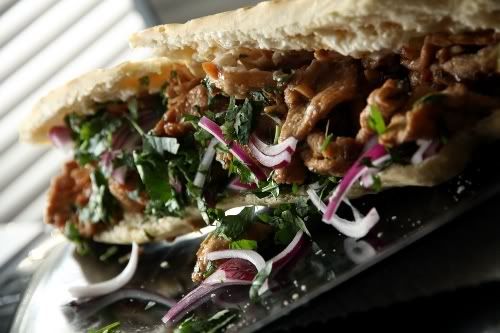
My Bánh mì
If you need a good baguette recipe (or just a good bread recipe in general), here's mine, which I also
posted here before:
-
2 1/2 cups bread flour
-
1 tablespoon white sugar
- 2 teaspoons kosher or coarse sea salt
-
2 teaspoons instant yeast
- 3 T wheat gluten
- 3 T potato starch (not potato flour)
- ~ 1 c warm water
I recommend working it by hand, instead of using a food processor, as it's very, very stiff. Besides, it won't take but a few minutes before it's ready to proof. I also recommend letting it rise at least twice. This recipe makes an excellent flatbread, but for baguettes, after the rise just cut off about 6-7 oz (makes a nice, large-but-not-too-large loaf) and shape. Brush with butter or egg wash if you like, cover with plastic wrap and let rise again. It may not rise all that much this time, but that's a good thing. You want that. Mine didn't rise much before it went into the oven. I didn't think too much of it, just figured it'd finish off while it was baking. But it didn't. At first I was pretty disappointed, and briefly considered making some new loaves with the rest of the dough, but in the end I went with it, and it actually turned out
perfect. See, the bread is really just a shell, something to hold all that flavorful pork inside so you don't have to use your bare hands or a fork. It does also contribute some flavor and texture, but you really don't want a whole lot of puffy bread getting in the way of the rest of your Bánh mì.
This recipe is definitely a lot more work than my other one, but it's worth every bit. I also can't stress enough that it's totally worth the effort to make your own baguette. Store-bought, even if it's 'artisan,' just can't compare.
